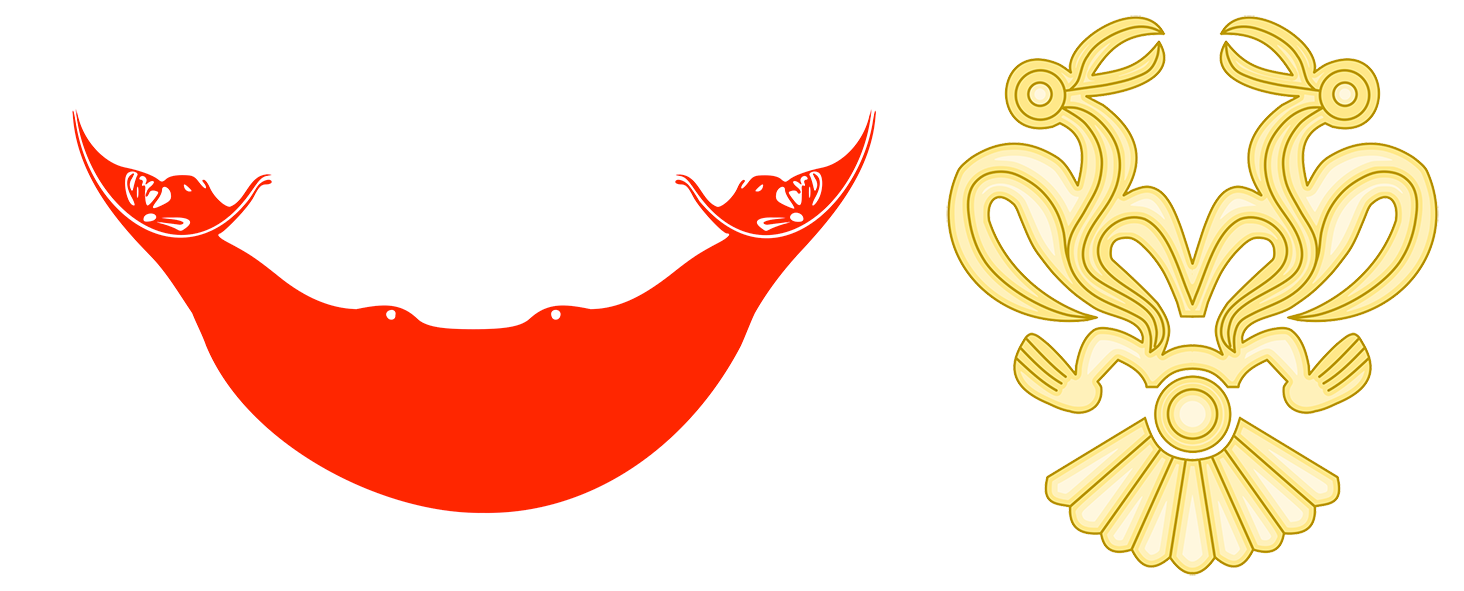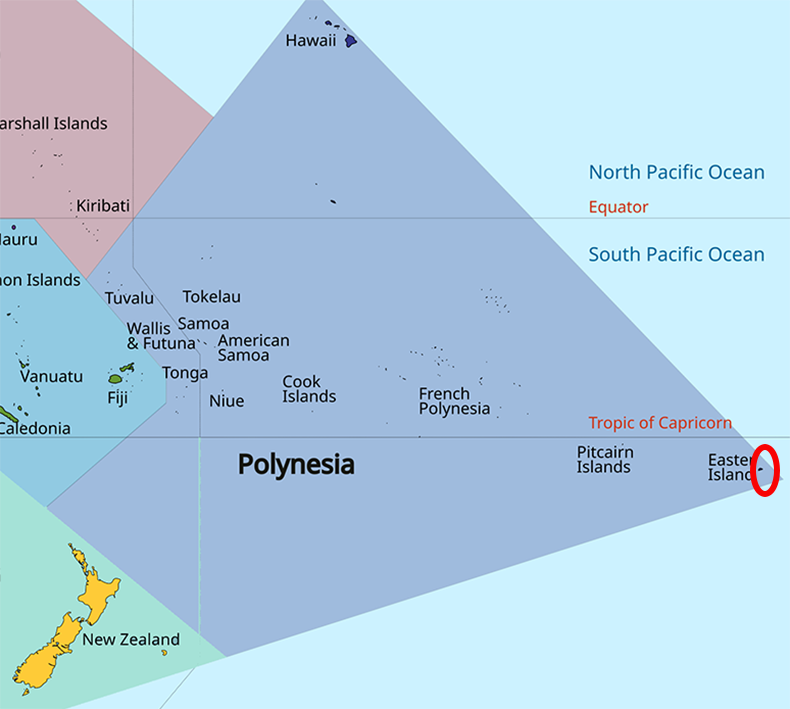FabulousFusionFood's Pascuense Recipes Home Page
 The flag of Easter Island (left) and the emblem of Easter Island (right).
The flag of Easter Island (left) and the emblem of Easter Island (right).
Welcome to the summary page for FabulousFusionFood's Pascuense recipes, part of Oceania. This page provides links to all the Tuvaluan recipes presented on this site, with 11 recipes in total.
This is a continuation of an entire series of pages that will, I hope, allow my visitors to better navigate this site. As well as displaying recipes by name, country and region of origin I am now planning a whole series of pages where recipes can be located by meal type and main ingredient. This page gives a listing of all the Pascuense recipes added to this site.
Pascuense cuisine, otherwise known as Easter Island cuisine or Rapa Nui cuisine, incorporates the influences of the indigenous Rapa Nui people and Latin America. Notable ingredients include seafood such as fish, octopus (heke), eel, sea snails (pipi) and crustaceans (lobster), as well as sweet potato, taro, banana, pineapple, coconut, pumpkin, and poultry, pork and lamb meat/mutton.
These recipes, for the major part, originate in Easter Island. Otherwise they are fusion recipes with major Pascuense influences.
Easter Island (Spanish: Isla de Pascua, Rapa Nui: Rapa Nui) is an island and special territory of Chile in the southeastern Pacific Ocean, at the southeasternmost point of the Polynesian Triangle in Oceania. The island is renowned for its nearly 1,000 extant monumental statues, called moai, which were created by the early Rapa Nui people. In 1995, UNESCO named Easter Island a World Heritage Site, with much of the island protected within Rapa Nui National Park. Easter Island is also the only territory in Polynesia where Spanish is an official language.
 The image above shows Easter Island (Rapa Nui) in relation to Polynesia, with the location of the
The image above shows Easter Island (Rapa Nui) in relation to Polynesia, with the location of the
Easter Island circled in red.Experts differ on when the island's Polynesian inhabitants first reached the island. While many researchers cited evidence that they arrived around the year 800, a 2007 study provided compelling evidence suggesting their arrival was closer to 1200. The inhabitants created a thriving and industrious culture, as evidenced by the island's numerous enormous stone moai and other artifacts. Land clearing for cultivation and the introduction of the Polynesian rat led to gradual deforestation. By the time of European arrival in 1722, the island's population was estimated to be 2,000 to 3,000. European diseases, Peruvian slave raiding expeditions in the 1860s, and emigration to other islands such as Tahiti further depleted the population, reducing it to a low of 111 native inhabitants in 1877
Chile annexed Easter Island in 1888. In 1966, the Rapa Nui were granted Chilean citizenship. In 2007, the island gained the constitutional status of 'special territory' (Spanish: territorio especial). Administratively, it belongs to the Valparaíso Region, constituting a single commune (Isla de Pascua) of the Province of Isla de Pascua. The 2017 Chilean census registered 7,750 people on the island, of which 3,512 (45%) identified as Rapa Nui.
Easter Island is one of the world's most remote inhabited islands. The nearest inhabited land (around 50 residents in 2013) is Pitcairn Island, 2,075 kilometres (1,289 mi) away; the nearest town with a population over 500 is Rikitea, on the island of Mangareva, 2,606 km (1,619 mi) away; the nearest continental point lies in central Chile, 3,512 km (2,182 mi) away.
Etymology: The name 'Easter Island' was given by the island's first recorded European visitor, the Dutch explorer Jacob Roggeveen, who encountered it on Easter Sunday (April 5) in 1722, while searching for 'Davis Land'. Roggeveen named it Paasch-Eyland (18th-century Dutch for 'Easter Island'). The island's official Spanish name, Isla de Pascua, also means 'Easter Island'.
The current Polynesian name of the island, Rapa Nui ('Big Rapa'), was coined after the slave raids of the early 1860s, and refers to the island's topographic resemblance to the island of Rapa in the Bass Islands of the Austral Islands group. Norwegian ethnographer Thor Heyerdahl argued that Rapa was Easter Island's original name and that the Bass Islands' Rapa (Rapa Iti) was named by refugees from it.
Islanders are referred to in Spanish as pascuense, but members of the indigenous community are commonly called Rapa Nui.
Notable dishes include:
Cazuela: A casserole dish adopted from Chile. The Easter Island version contains Polynesian ingredients such as sweet potato and plantain. Ceviche: A raw fish dish cooked in citrus juice. Tuna is the preferred fish.
Empanada: Baked turnover pastry containing fillings. In Easter Island, tuna is the most popular filling.
Po'e: A traditional pudding made from pounded foods like banana or taro, wrapped in leaves and baked into a thick consistency.
Sopaipilla: Leavened bread, rolled into a sheet, cut and deep-fried.
Tunu Ahi: Fish grilled on hot rock.
Umu: Also known as Umu pae. It is a traditional method of cooking large quantities of food. Leaves and food are layered on hot rocks before covering with soil.
This is a continuation of an entire series of pages that will, I hope, allow my visitors to better navigate this site. As well as displaying recipes by name, country and region of origin I am now planning a whole series of pages where recipes can be located by meal type and main ingredient. This page gives a listing of all the Pascuense recipes added to this site.
Pascuense cuisine, otherwise known as Easter Island cuisine or Rapa Nui cuisine, incorporates the influences of the indigenous Rapa Nui people and Latin America. Notable ingredients include seafood such as fish, octopus (heke), eel, sea snails (pipi) and crustaceans (lobster), as well as sweet potato, taro, banana, pineapple, coconut, pumpkin, and poultry, pork and lamb meat/mutton.
These recipes, for the major part, originate in Easter Island. Otherwise they are fusion recipes with major Pascuense influences.
Easter Island (Spanish: Isla de Pascua, Rapa Nui: Rapa Nui) is an island and special territory of Chile in the southeastern Pacific Ocean, at the southeasternmost point of the Polynesian Triangle in Oceania. The island is renowned for its nearly 1,000 extant monumental statues, called moai, which were created by the early Rapa Nui people. In 1995, UNESCO named Easter Island a World Heritage Site, with much of the island protected within Rapa Nui National Park. Easter Island is also the only territory in Polynesia where Spanish is an official language.
 The image above shows Easter Island (Rapa Nui) in relation to Polynesia, with the location of the
The image above shows Easter Island (Rapa Nui) in relation to Polynesia, with the location of theEaster Island circled in red.
Chile annexed Easter Island in 1888. In 1966, the Rapa Nui were granted Chilean citizenship. In 2007, the island gained the constitutional status of 'special territory' (Spanish: territorio especial). Administratively, it belongs to the Valparaíso Region, constituting a single commune (Isla de Pascua) of the Province of Isla de Pascua. The 2017 Chilean census registered 7,750 people on the island, of which 3,512 (45%) identified as Rapa Nui.
Easter Island is one of the world's most remote inhabited islands. The nearest inhabited land (around 50 residents in 2013) is Pitcairn Island, 2,075 kilometres (1,289 mi) away; the nearest town with a population over 500 is Rikitea, on the island of Mangareva, 2,606 km (1,619 mi) away; the nearest continental point lies in central Chile, 3,512 km (2,182 mi) away.
Etymology: The name 'Easter Island' was given by the island's first recorded European visitor, the Dutch explorer Jacob Roggeveen, who encountered it on Easter Sunday (April 5) in 1722, while searching for 'Davis Land'. Roggeveen named it Paasch-Eyland (18th-century Dutch for 'Easter Island'). The island's official Spanish name, Isla de Pascua, also means 'Easter Island'.
The current Polynesian name of the island, Rapa Nui ('Big Rapa'), was coined after the slave raids of the early 1860s, and refers to the island's topographic resemblance to the island of Rapa in the Bass Islands of the Austral Islands group. Norwegian ethnographer Thor Heyerdahl argued that Rapa was Easter Island's original name and that the Bass Islands' Rapa (Rapa Iti) was named by refugees from it.
Islanders are referred to in Spanish as pascuense, but members of the indigenous community are commonly called Rapa Nui.
Pascuense Cuisine:
Pascuense cuisine, otherwise known as Easter Island cuisine or Rapa Nui cuisine, incorporates the influences of the indigenous Rapa Nui people and Latin America. Notable ingredients include seafood such as fish, octopus (heke), eel, sea snails (pipi) and crustaceans (lobster), as well as sweet potato, taro, banana, pineapple, coconut, pumpkin, and poultry, pork and lamb meat. Traditional foods include umu, meat, fish, vegetables and fruit wrapped in banana leaves and roasted in an umu pae, an earth oven. Po'e, pudding made of mashed bananas, pumpkin and flour is baked in the umu pae as well. Other favorite dishes are tunu ahi, fish grilled on hot stones, or ceviche. Pascuense cuisine also includes meat dishes, such as pork or mutton ribs.Notable dishes include:
Cazuela: A casserole dish adopted from Chile. The Easter Island version contains Polynesian ingredients such as sweet potato and plantain. Ceviche: A raw fish dish cooked in citrus juice. Tuna is the preferred fish.
Empanada: Baked turnover pastry containing fillings. In Easter Island, tuna is the most popular filling.
Po'e: A traditional pudding made from pounded foods like banana or taro, wrapped in leaves and baked into a thick consistency.
Sopaipilla: Leavened bread, rolled into a sheet, cut and deep-fried.
Tunu Ahi: Fish grilled on hot rock.
Umu: Also known as Umu pae. It is a traditional method of cooking large quantities of food. Leaves and food are layered on hot rocks before covering with soil.
The alphabetical list of all the Pascuense recipes on this site follows, (limited to 100 recipes per page). There are 11 recipes in total:
Page 1 of 1
| Ceviche de Atún (Tuna Ceviche) Origin: Easter Island | Po'e (Fruit Pudding Cake) Origin: Easter Island | Rapa Nui Dumplings Origin: Easter Island |
| Empanadas fritas de mariscos (Fried Seafood Empanadas) Origin: Easter Island | Pulpo con salsa cítrica de mango (Octopus with citrus mango sauce) Origin: Easter Island | Taro Guisado (Taro Stew) Origin: Easter Island |
| Medallones de Congrio Frito (Fried Conger Eel Medallions) Origin: Easter Island | Pumpkin Sopaipillas with Honey Origin: Easter Island | Tunu Ahi Ika Origin: Easter Island |
| Po'e Origin: Easter Island | Rapa Nui Cazuela Origin: Easter Island |
Page 1 of 1